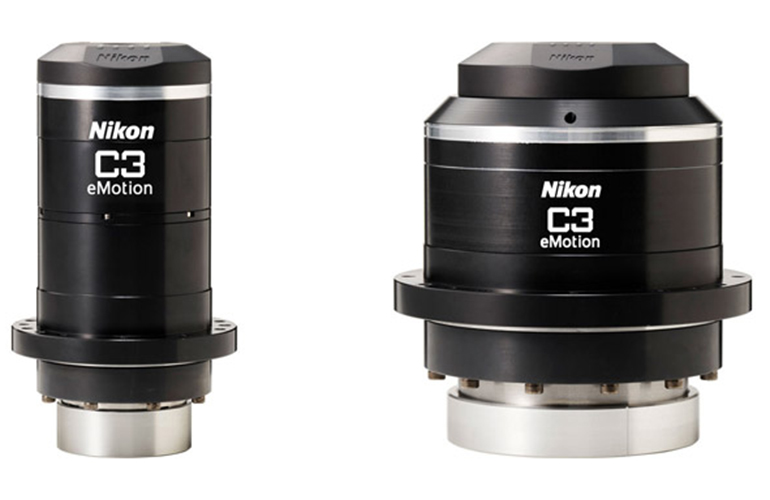|
Listen to this article
|

Nikon announced the expansion of its C3 eMotion intelligent actuator unit lineup, each of which combines vital robot joint components including a motor, speed reducer, motor driver, brake and encoders together into one package. Nikon will now offer the IAU-30 and IAU-300 types, which differ in terms of size, torque and other characteristics.
The C3 eMotion is a robotic joint unit for collaborative robot arms that facilitates easier building of robots even by users who have no knowledge of robot design. Moreover, thanks to its high versatility, the C3 eMotion can also be used as a component in semiconductor equipment, machine tools, measurement instrument, conveyance equipment and other machines and systems which require high stopping accuracy, machining precision or similar.
The C3 eMotion operates under Nikon’s proprietary double-encoder structure (containing two encoders), which enables detection of external forces and robot operation stoppage in response, direct teaching in which the robot can be made to learn commands via direct manipulation by human users, and a wide range of other useful functions.
Many manufacturers face labor shortages and as they need to implement production facility automation and labor-saving in response, there is an increasing demand for robots that can work cooperatively alongside humans. However, because robots comprise a wide array of components such as motors, speed reducer, motor driver, brake and encoders, sophisticated skills and know-how are required to coordinate all of these. With the C3 eMotion, Nikon combines all of these parts into a single-package robotic joint unit which can be used together with a robotic arm to form a robotic joint structure.
In addition to the IAU-60 and IAU-200 units released in 2020, Nikon has added the new IAU-30, which is compact type and IAU-300 which is larger-hollow and larger-torque type. These additions to C3 eMotion lineup give customers a wider range of options, enabling freer robotic system creation tailored to specific user needs. Moving forward, the company will continue developing new models and expanding this lineup in order to better address market demand.
Main Features
1. Contributing to more flexible and easier robot design
Combining a C3 eMotion unit with a robotic arm selected based on intended usage application enables easy changes to robotic joint numbers, maximum load capacity and other factors, thus facilitating more flexible and easier robot design.
2. High safety performance
The double-encoder structure utilizing encoders in two locations at both the input shaft and output shaft enables detection of even minor external forces applied during robot operation. For example, if a human worker or object comes into contact with the robot while it is working, the robot can detect the impact (external force) and safely stop operations.
3. Operations with direct teaching
The double-encoder structure enables responses to detected external forces, it is possible for human operators to directly manipulate the robot and thus program operations through the direct teaching.
4. High-precision positioning performance
Because high performance encoders installed on both the input shaft and the output shaft via the double-encoder structure make it possible to monitor rotation speeds on both shaft and positioning information with high accuracy. This enables high-precision positioning performance, which is vital for collaborative operations between human workers and robots.





